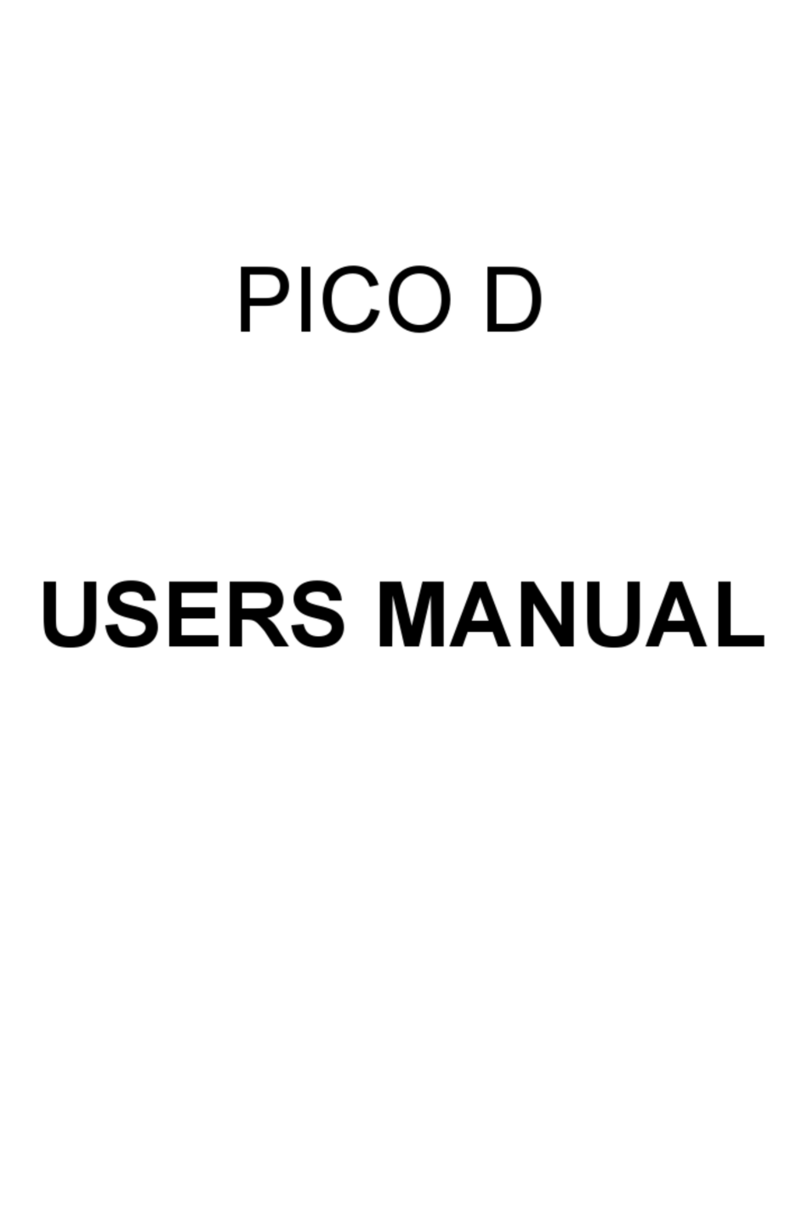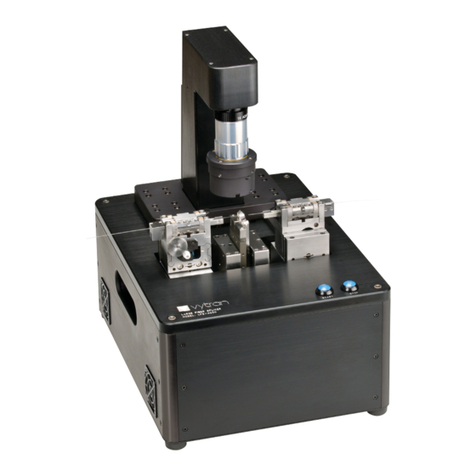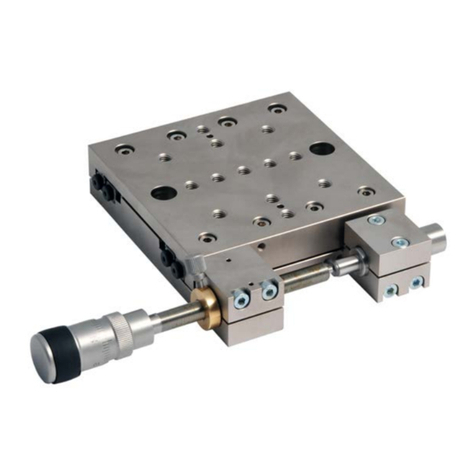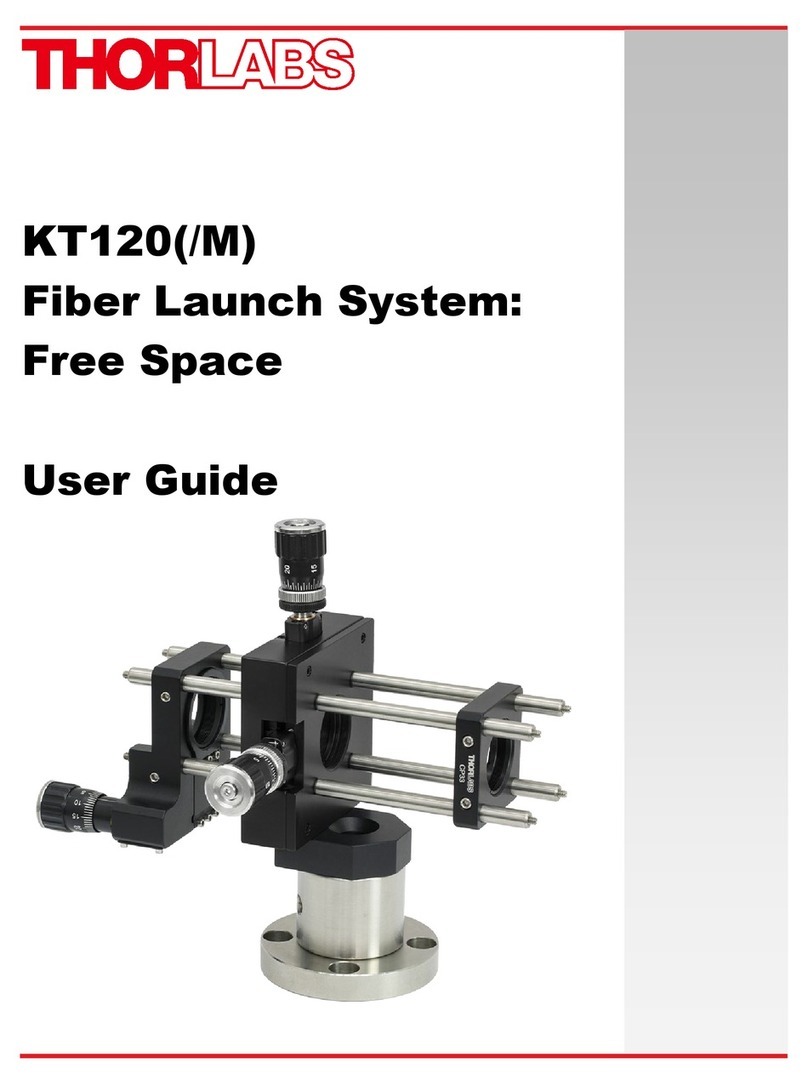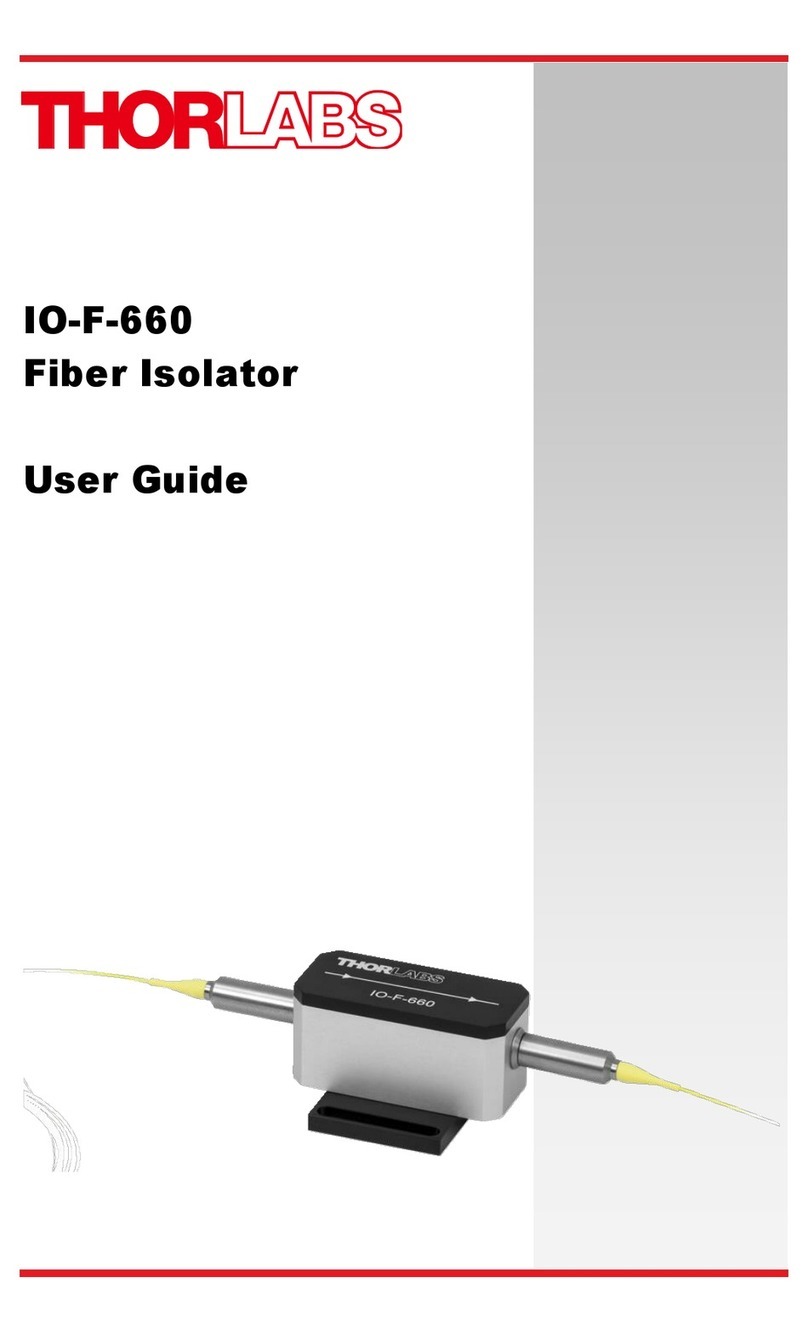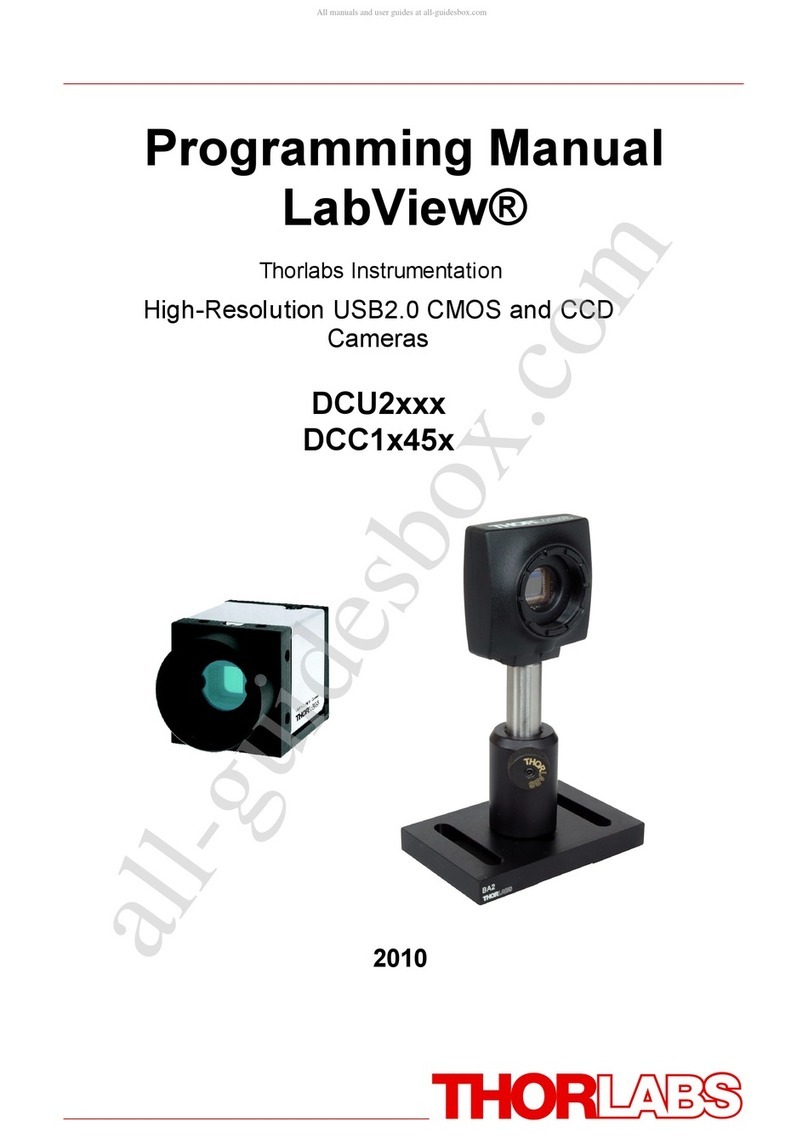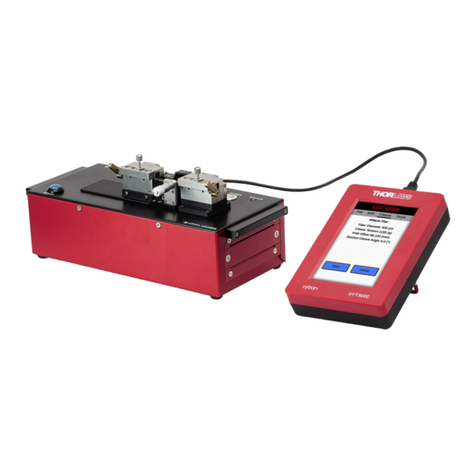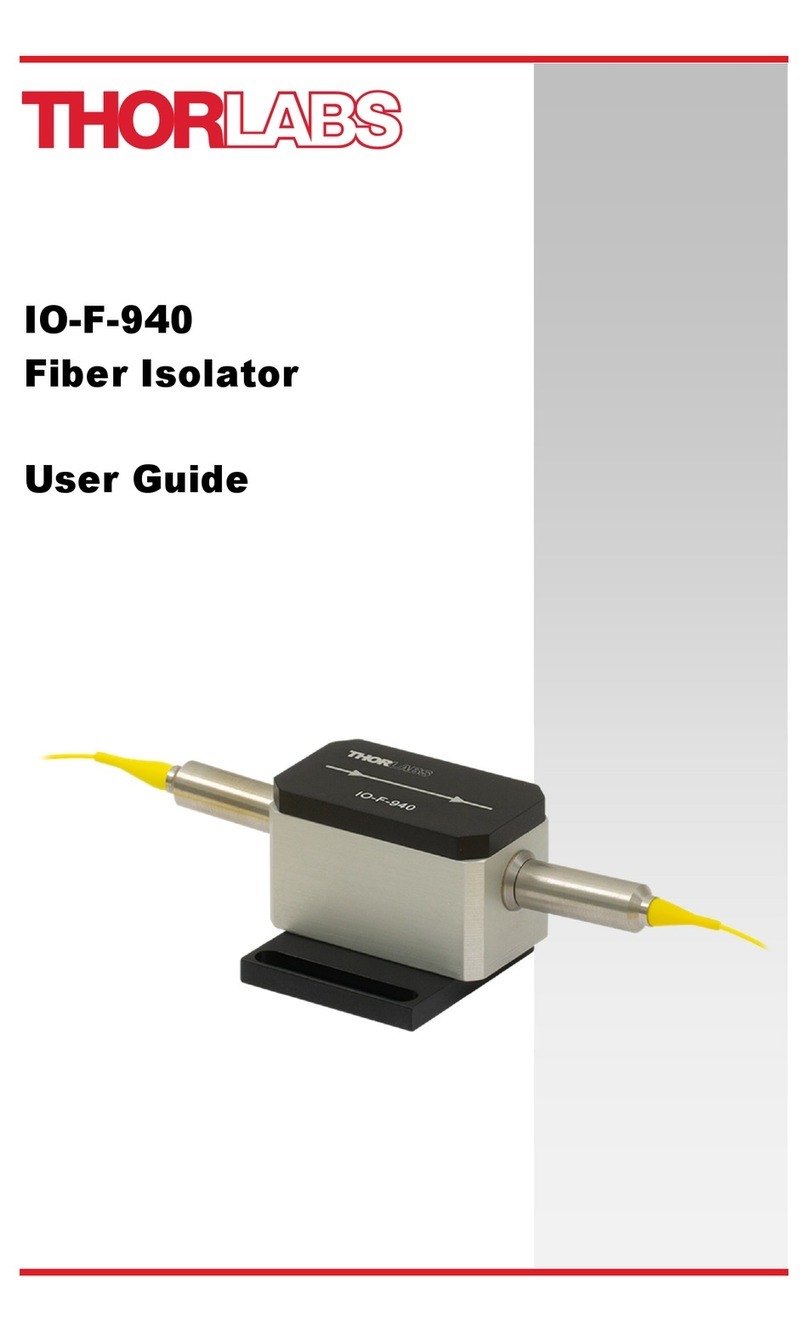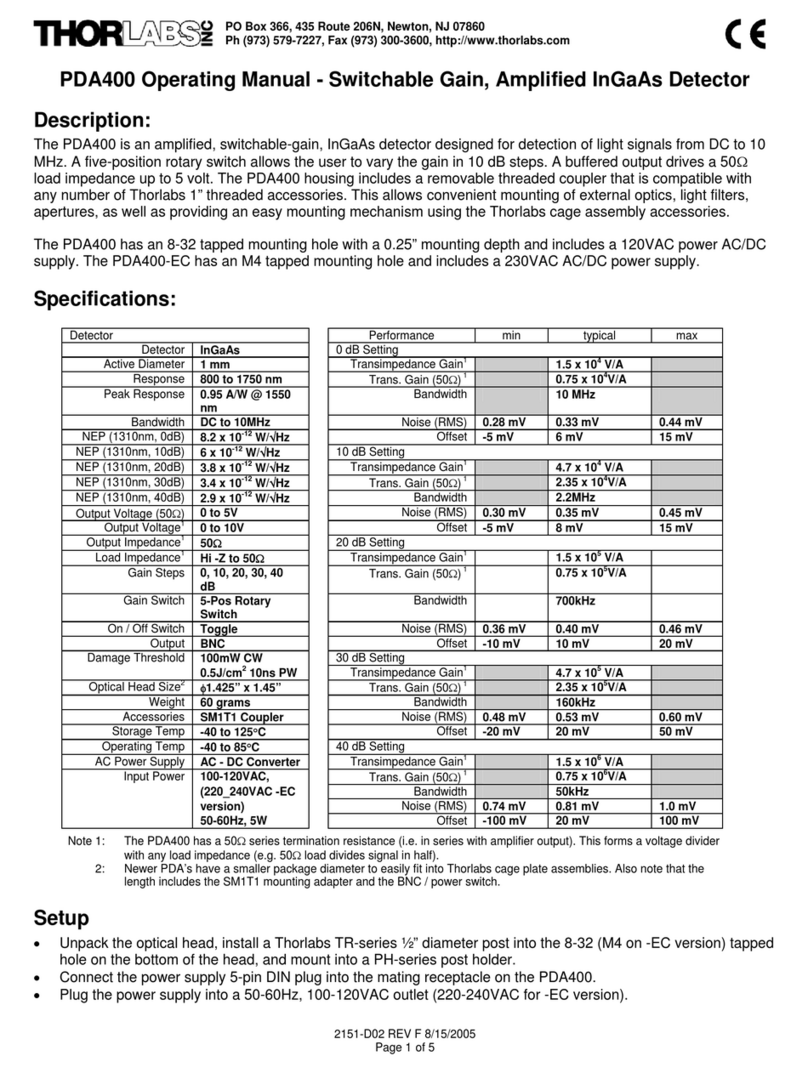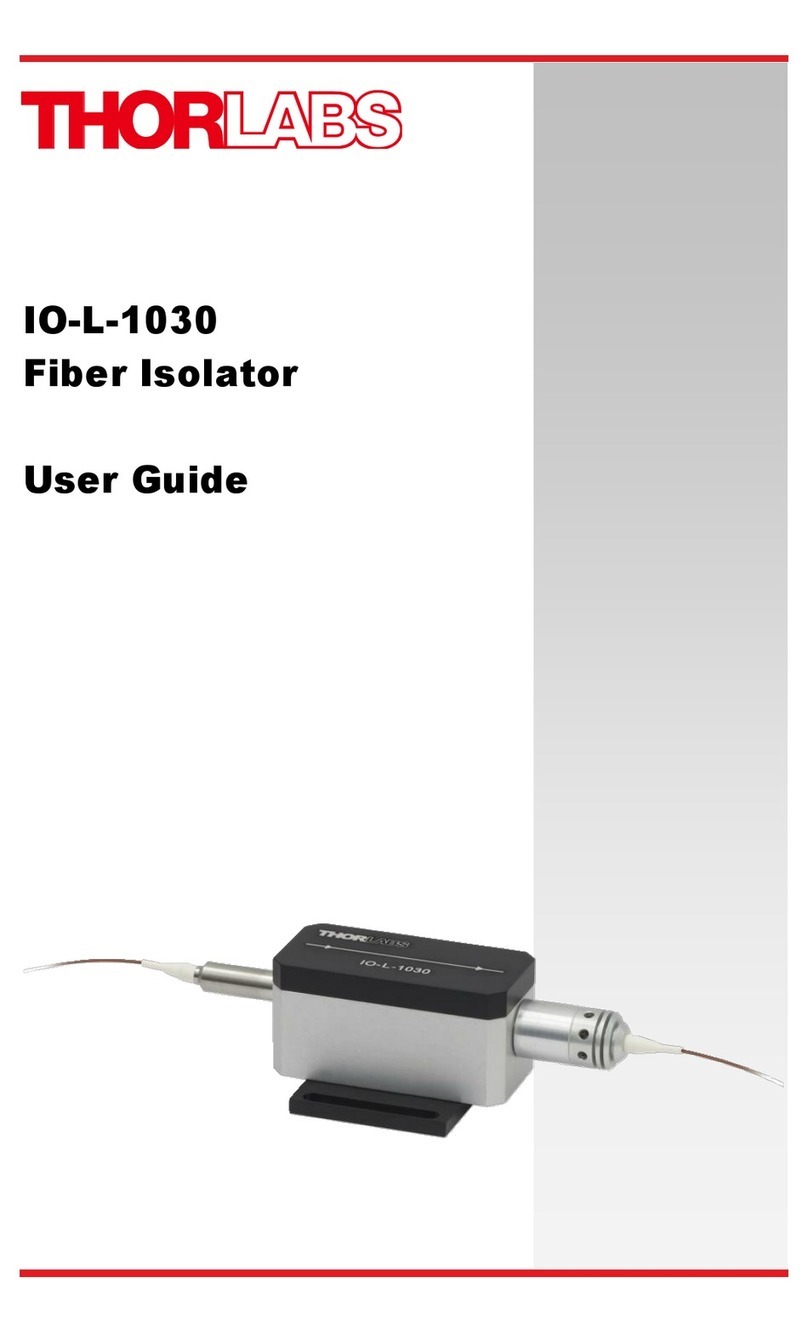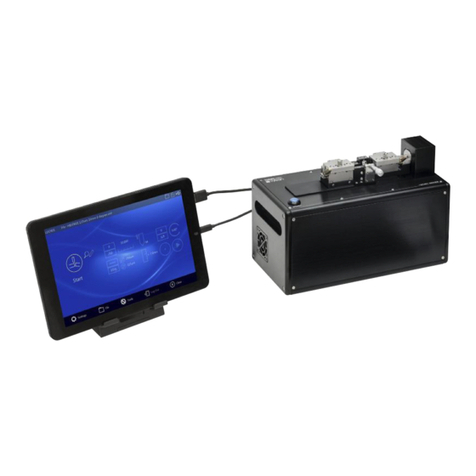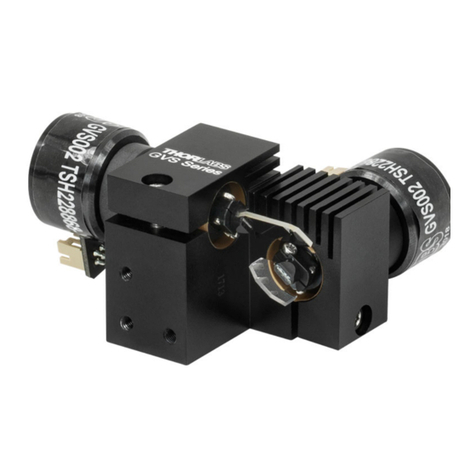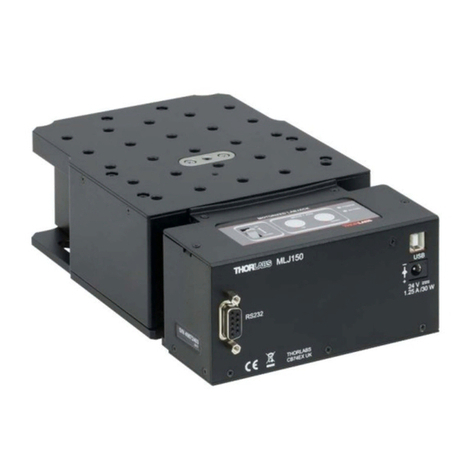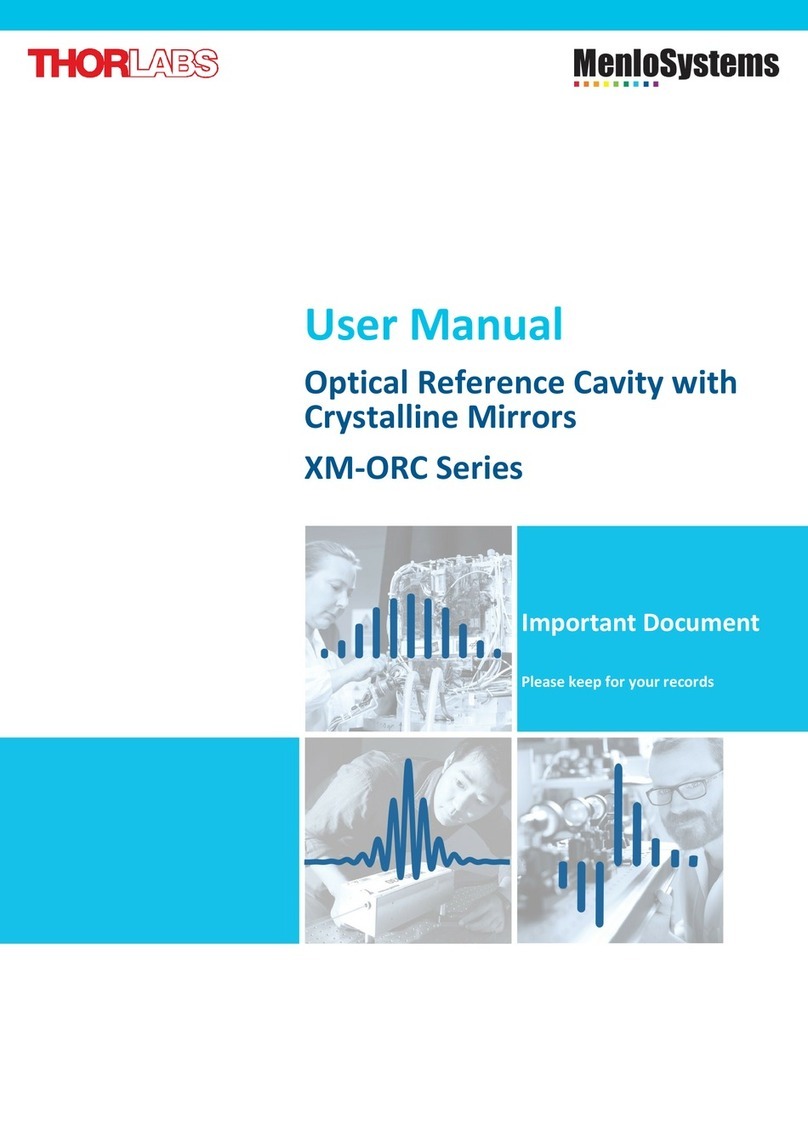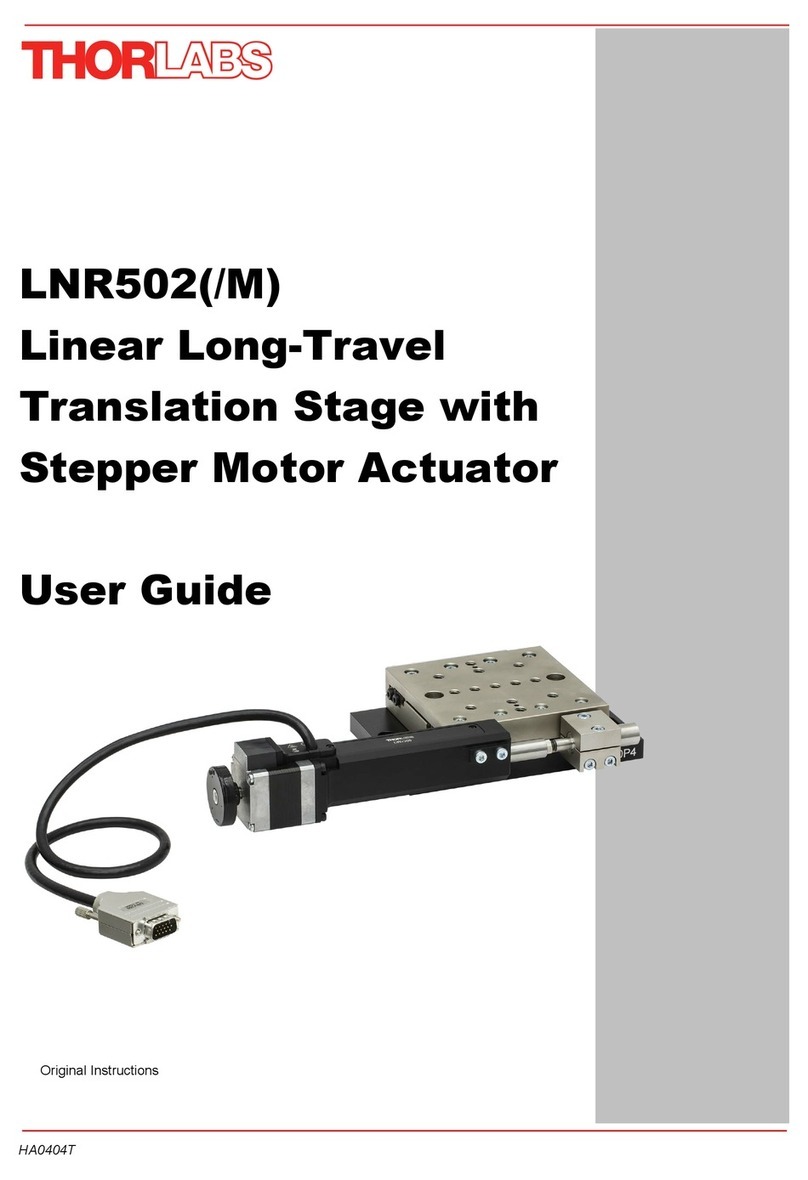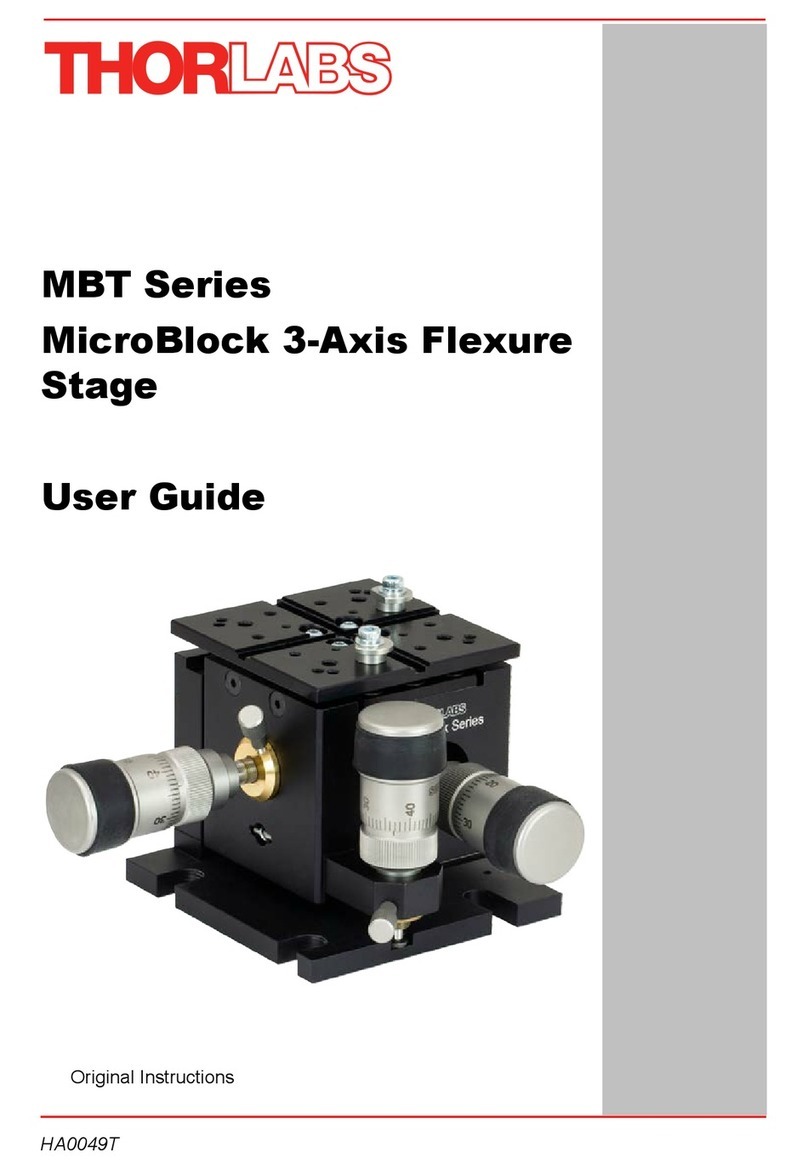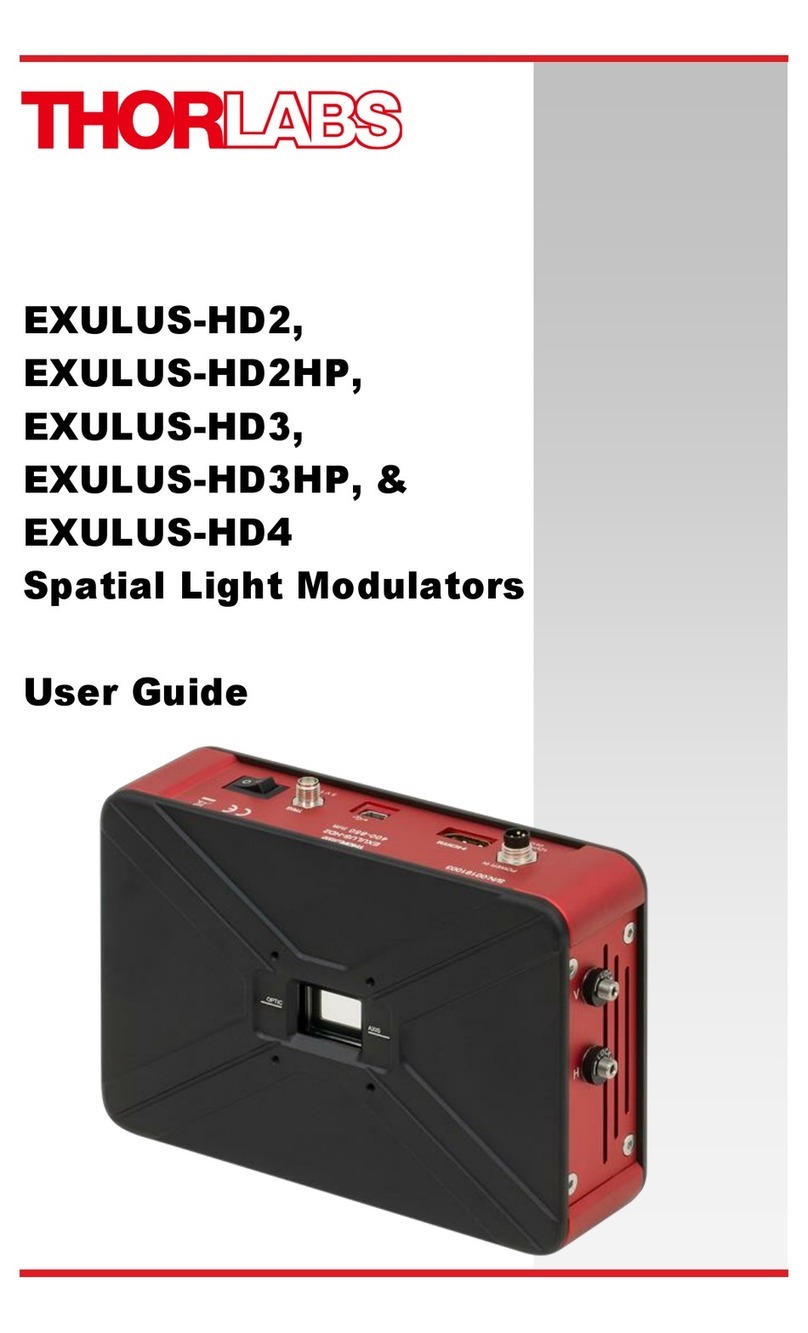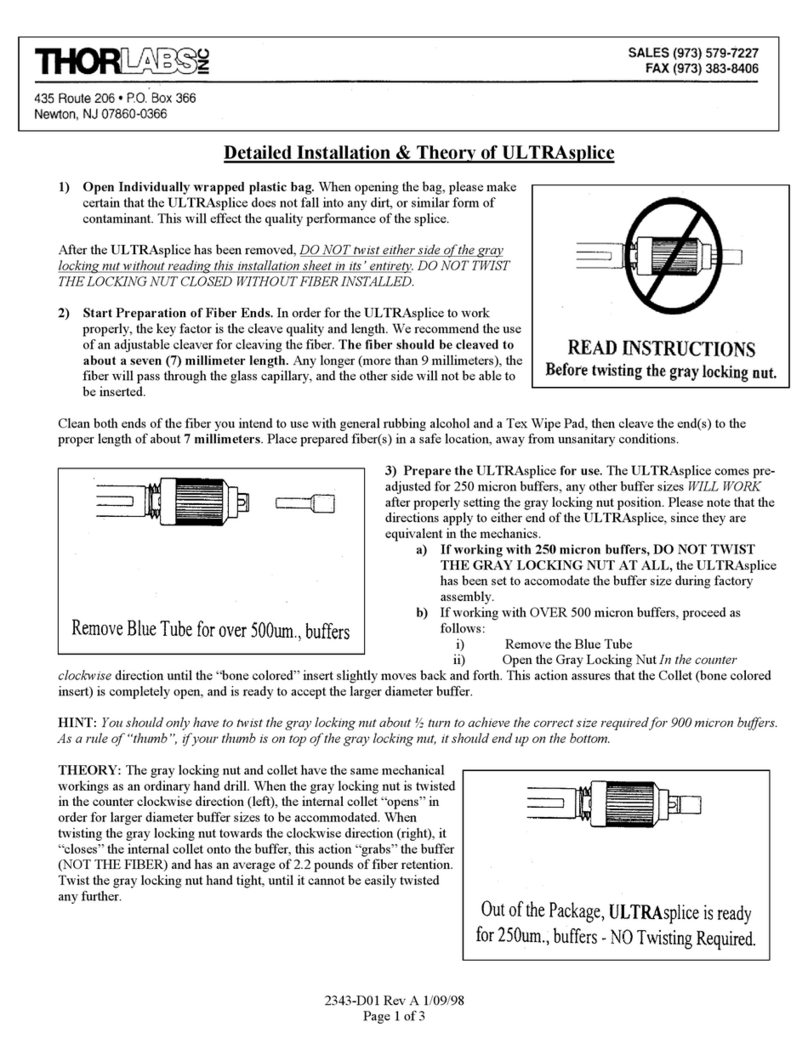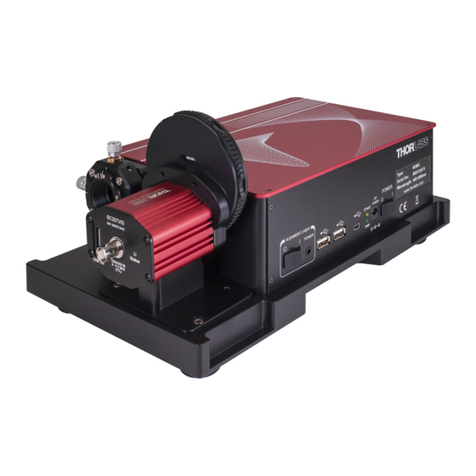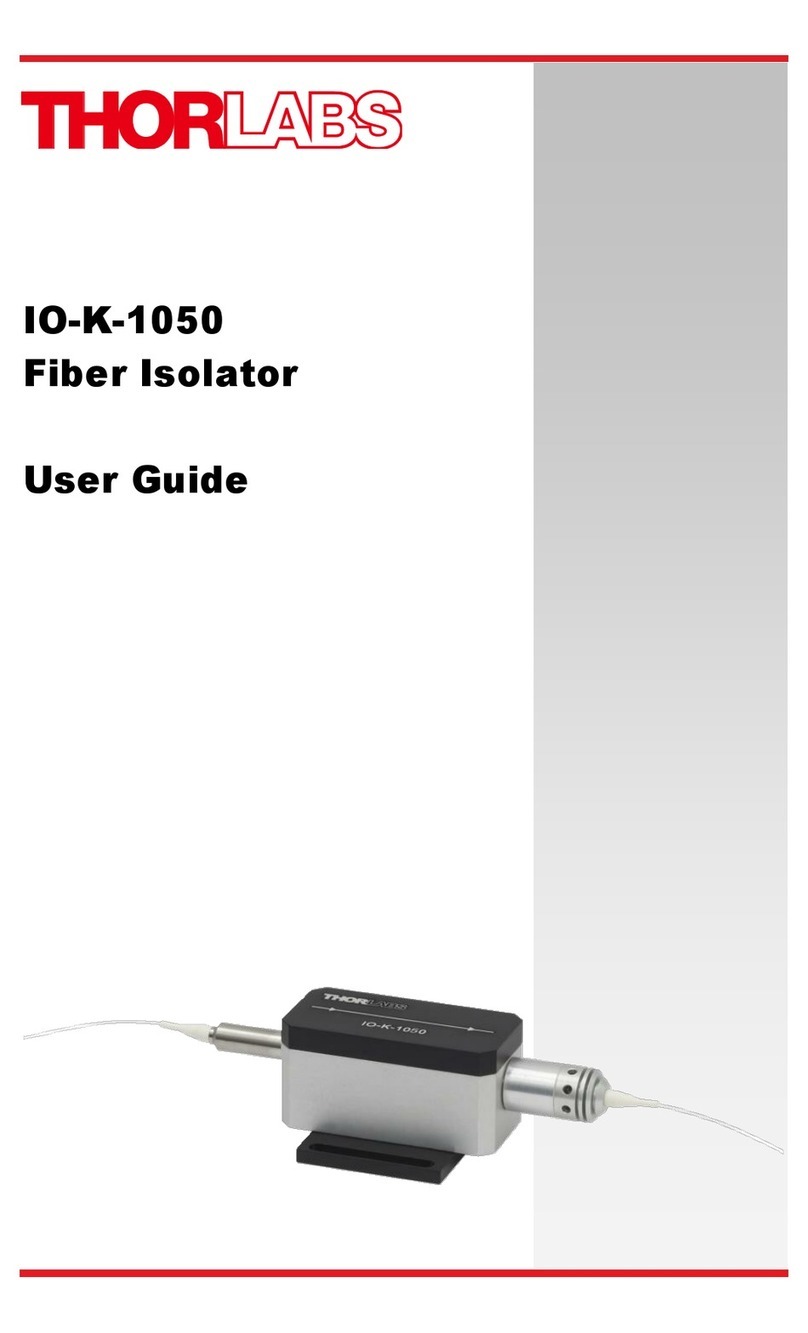
ELL6(K), ELL9(K), and ELL12(K) Optic Slider Kits Chapter 4: Operation
Rev. B, April 5, 2023 Page 7
Chapter 4 Operation
Getting Started
Although the module can tolerate up to 8kV of air discharge, it must be treated as an ESD sensitive
device. When handling the device, anti-static precautions must be taken, and suitable and discharge
appliances must be worn.
Do not expose the slider to a strong infrared light (e.g., direct sunlight) as it could interfere with the
operation of the position sensor.
When power is applied, do not connect, or disconnect the ribbon cable connecting the USB/PSU
adapter to the Stage PCB. Always remove power before making connections.
Do not move the stage by hand. Doing so will disorientate the motors and cause the unit to fail.
The home sensor of the device relies on a 950nm led which can leak from the device. This should be
taken into consideration for environments that are especially sensitive to foreign light sources.
If the device is operated over a prolonged time, the motor housing may become hot. This does not
affect motor operation but may cause discomfort if contacted by exposed skin.
1. Perform the mechanical installation as detailed in Section 3.2
2. Turn on and boot up the host PC
.
3.
C
onnect the handset to the stage if required
.
The unit is easily damaged by connections with incorrect polarity. Pin 1 of the connector on the PCB
is marked with an arrow (see Figure 8 and section 5.2) which should be adjacent to the red wire in the
connecting cable.
4.
Connect the stage to a 5 V supply
and switch ‘ON’. (A 5 V PSU is supplied with the ELL6K, ELL9K, and
ELL12K).
Boot up the PC BEFORE connecting the USB cable. DO NOT connect a powered ELL kit to a PC that is
not powered up and running.
5. Using the USB cable supplied, connect the handset to the PC.
6. Wait for the drivers to be installed.
7. Home the stage. Homing is necessary to align the sensor and establish a datum from which all future
moves are measured.
